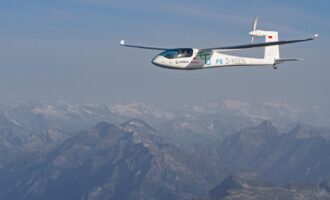Ford’s tribology expert outlines opportunities for improved fuel economy and CO2 reduction
By Aaron Stone
Mechanical friction losses in an engine consume about 7.5% of total energy input. To some, this may sound like a relatively minor contribution. But frictional losses are a “pretty big deal” to OEMs, according to Arup Gangopadhyay, technical leader of Lubrication Science and Mechanical Friction in Powertrain Research and Advanced Engineering at Ford Motor Company. Reducing friction contributes directly to fuel economy improvements, often at a low cost.
As OEMs strive to optimise engine performance and achieve legislated targets for emission limits, friction reduction remains a high priority. We aim “to reduce friction as much as possible,” confirms Gangopadhyay.
Minimising CO2 emissions is a significant challenge for automobile manufacturers, particularly in the United States. A target of reducing the current federal fuel economy standard from 35.5 miles per gallon to 50.8 miles per gallon by 2025 represents a 43% improvement; although Gangopadhyay concedes these aggressive targets, established in 2012, are “currently under review.”
The principal contributor to friction losses in the engine are pistons and piston rings. Pistons account for 35% of energy losses, piston rings delivering a further 26%. Main bearings (17%), connected rod bearings (14%) and the valvetrain (8%) round out the balance.
Armed with this knowledge, manufacturers have achieved incremental enhancements in friction reduction in these tribologically critical engine parts through improved finish, design and engine oils, delivering substantial gains in fuel economy. Though, Gangopadhyay cautions, friction is only “one aspect” of engine design, and efforts to reduce friction must be balanced against durability, emissions (oil consumption) and affordability.
The ongoing pursuit of efficiency has seen Ford Motor Company introduce new materials and coatings alongside ongoing technology developments. Speaking at F+L Week 2017 on “Engine Tribology Technology Trends and Engine Oil Challenges,” Gangopadhyay identified several technological trends of engine components.
Countering piston rings and cylinder bore contact
 To lessen frictional loss through piston ring contact, an increasing use of PVD chromium nitride, an extremely hard, inert and thin film coating, is evident.. PVD coatings are more prevalent in Japan and Europe, although Gangopadhyay notes its increasing adoption in North America. Nitriding, a process that combines ferrous metal with nitrogen, is becoming more widespread, and Gangopadhyay says Diamond-Like Carbon (DLC) coated piston rings are emerging as an option for friction reduction and wear protection.
To lessen frictional loss through piston ring contact, an increasing use of PVD chromium nitride, an extremely hard, inert and thin film coating, is evident.. PVD coatings are more prevalent in Japan and Europe, although Gangopadhyay notes its increasing adoption in North America. Nitriding, a process that combines ferrous metal with nitrogen, is becoming more widespread, and Gangopadhyay says Diamond-Like Carbon (DLC) coated piston rings are emerging as an option for friction reduction and wear protection.
The growing trend towards lower piston ring tensions will “obviously reduce friction,” he says, however he warns that this creates a delicate ‘balancing act’ when managing oil consumption.
A “proliferation of different technologies” are emerging to minimise contact in the cylinder bore. Plasma Transfer Wire Arc Spray (PTWA) deposits fine mist of molten steel on the internal surface of the cylinder bore. Similar technologies include Twin Wire Arc Spraying and Electric Arc Wire Spraying, using electricity and atomised air. These coatings have proven to be a cost-effective alternative to speciality cylinder bore liners, and can reduce up to four to six pounds of mass depending on engine architecture.
Improved form honing is enabling a reduction in bore distortion, which aids in reducing ring tension. Gangopadhyay says the industry is also delivering improvements in honing finish, with a step towards mirror finishing in the cylinder bore, and other parts of the engine, such as the crankpin.
Typically, aluminium pistons create contact between the skirt and linings. New wear resistant coatings containing nano particles and polymer coatings have been developed. Coupled with this change is a shift towards micro dimpling and texturing, although Gangopadhyay advises the latter remains at the laboratory stage at this time, with “a lot of work going on behind the scenes” to progress to production.
One intriguing trend is the increasing use of DLC coating on piston pins. The Ford Motor Company tribologist questions the logic of this development. As yet, he says, no one has identified a friction benefit.
Reducing valvetrain cam and tappet contact
While admittedly, the valvetrain is a smaller contributor to frictional loss, Gangopadhyay believes an opportunity exists to lessen cam and tappet contact friction, the primary source of friction in this part of the engine. Increasing employment of super finished camshafts, alongside other emerging trends such as roller bearings on the front cam bearing, the site of maximum load, and DLC coatings on the tappets themselves, all seek to diminish valvetrain friction
Gangopadhyay suggests that a significant development is ongoing in engine chain drive systems, to reduce friction in the chain and guide. Some OEMs, he asserts, are applying alternative low friction guide material and low friction coating on the chains themselves.
Managing bearing load
New technology, and a drive to reduce bearing size, has placed higher loads on bearings, particularly rod bearings. More transient conditions, such as those delivered with start-stop technology, can generate “a lot more contact,” he says. In addition, imperfect geometry can amplify contact, friction, and even seizure, he says.
Bearing manufacturers are increasingly employing polymeric coated bearings, such as polyamide imide with solid lubricants and particulates, providing enhanced load carrying capacity, wear and seizure resistance.
Opportunities for powertrain lubricants
During his F+L Week 2017 presentation, Gangopadhyay confirmed the trend to lower viscosity lubricants, and the opportunity to further reduce friction “not only for the engines, but for transmissions and axles.” Nevertheless, he expressed concern about potentially compromising durability.
A key consideration for gasoline engines is protection against low speed pre-ignition (LSPI). Gangopadhyay said the GF-6 engine oil specification includes a Ford test for LSPI resistance, however GF-6 first licensing is not expected until 2019 at the earliest. For diesel engines, improving turbocharger performance, producing oils that reduce or eliminate coking, is of specific concern.
Since GF-3, evolutions in base oil and additive chemistry have provided a significant opportunity to reduce mechanical friction. Gangopadhyay believes the advent of novel base stocks provide further potential. He cited Polyalkylene Glycol base stock (PAG) as an exciting prospect. He says a range of Ford Motor Company tests demonstrated significant friction reduction with the use of PAG, irrespective of test type.
Compatibility with current additive technologies, seal materials and miscibility with mineral oil, are however key barriers to progress with novel base oils. Gangopadhyay counsels co-basing with mineral oils can address some of these issues and help bringing about this opportunity sooner.







